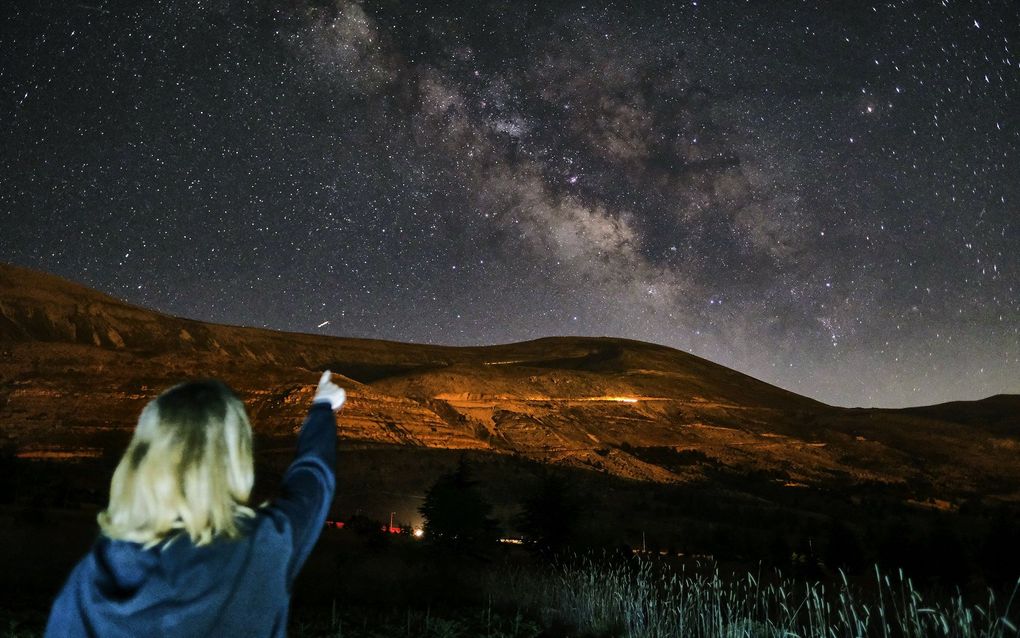Why the search for extra-terrestrial life can cost billions
19-09-2022
Central Europe
Fritz Imhof, Livenet

Photo AFP, Ibrahim Chalhoub
Central Europe
The Eidgenössische Technische Hochschule Zürich (ETH Zürich), a university in Switzerland, has invested nine million in a research centre searching for extra-terrestrial life. NASA is investing billions in the same thing. Livenet editor Fritz Imhof thinks about the usefulness of these investments.
The search for extra-terrestrial life is fascinating. That is why ETH Zürich has now jumped on the bandwagon and wants to – still very modestly – participate in the search for extra-terrestrial life. Recently, it was all about finding intelligent life on other planets. Antennas and satellites are also available for this purpose.
Are we alone in the universe?
The question of whether we as humans are alone in the universe has plagued mankind for centuries. While the appearance of the Son of God on this earth is exclusive for Christians, sceptics, in particular, have driven research into life on other planets and in other galaxies. That is legitimate. The progress of science thrives on the fact that people are interested in knowing more and more and exploring the unknown.
The search for extra-terrestrial life also has religious traits. The Swiss Erich von Däniken believes that beings from outer space have visited us. But even NASA deals with "Unidentified Flying Objects", unidentified phenomena in the airspace.
Internal discussion
There is an internal discussion with e-mails about visits from extra-terrestrials to earth, even if this is not publicly communicated. However, research teams at two NASA research centres are now beginning their targeted search for extra-terrestrial life.
For the astrophysicist Sascha Quanz from ETH Zürich, one thing is clear: "My goal is to find life outside our solar system. I have 25 years; that is not impossible." The professor of astrophysics at the ETH Zürich now has the "new research and teaching centre for the origin and spread of life on and outside the earth at his disposal", as the science journalist Bruno Knellwolf writes in the Aargauer Zeitung. And: "The origin of life is probably the greatest mystery of mankind. "How did the stony earth without life become a living earth?" Cara Magnabosco, a geobiologist at the ETH, asks. She is also part of the recently opened centre, whose director is the Nobel Prize winner Didier Queloz.
Solving the big questions of mankind
The astrophysicist Didier Queloz speaks of recent scientific breakthroughs in this field. Queloz himself, together with Michel Mayor, discovered the first planet outside our solar system around 30 years ago. That earned them both the Nobel Prize.
According to Queloz, the James Webb telescope enables an unprecedented view of the universe's past. But also, important insights have been gained in molecular biology and other life sciences. All this knowledge is now "bundled in this research centre of biologists, physicists, astrophysicists, chemists, earth scientists and environmental system scientists, to solve the big questions of mankind", ETH President Joël Mesot explains according to the AZ at the opening.
When Christians question the point of this expensive research, scientists will tell them that the church once excommunicated a researcher – Galileo Galilei – who challenged the dogma that the earth was at the centre of the universe and everything revolved around it.
Therefore, insisting that there is only one humanity will only lead to headshakes in research circles. Nevertheless, the motivation for researching life on other planets and solar systems can also be questioned. Because there are still enough unsolved questions on this earth for which less money is available.
Religious interest?
If it is possible to prove that there is not only primitive but also humanlike life on other planets, this would be another piece in the jigsaw puzzle for the theory of evolution. Although it would not answer the question of the actual origin of the cosmos and especially of human life, it forms the counter-thesis to divine creation for a large part of natural science and most sceptics.
There may also be a quasi-religious interest behind the pursuit of the search for life outside the earth. Anyone who can believe in creation without a creator can also believe that he does not have to give an account before any creator.
However, Heino Falcke, who was the first to photograph the "black hole", proves that astronomers and natural scientists do not have to be atheists but can actually come closer to the Creator in their work. Godless physics is impossible for him.
This article was translated by CNE.news and published by Livenet on September 13, 2022
Related Articles





